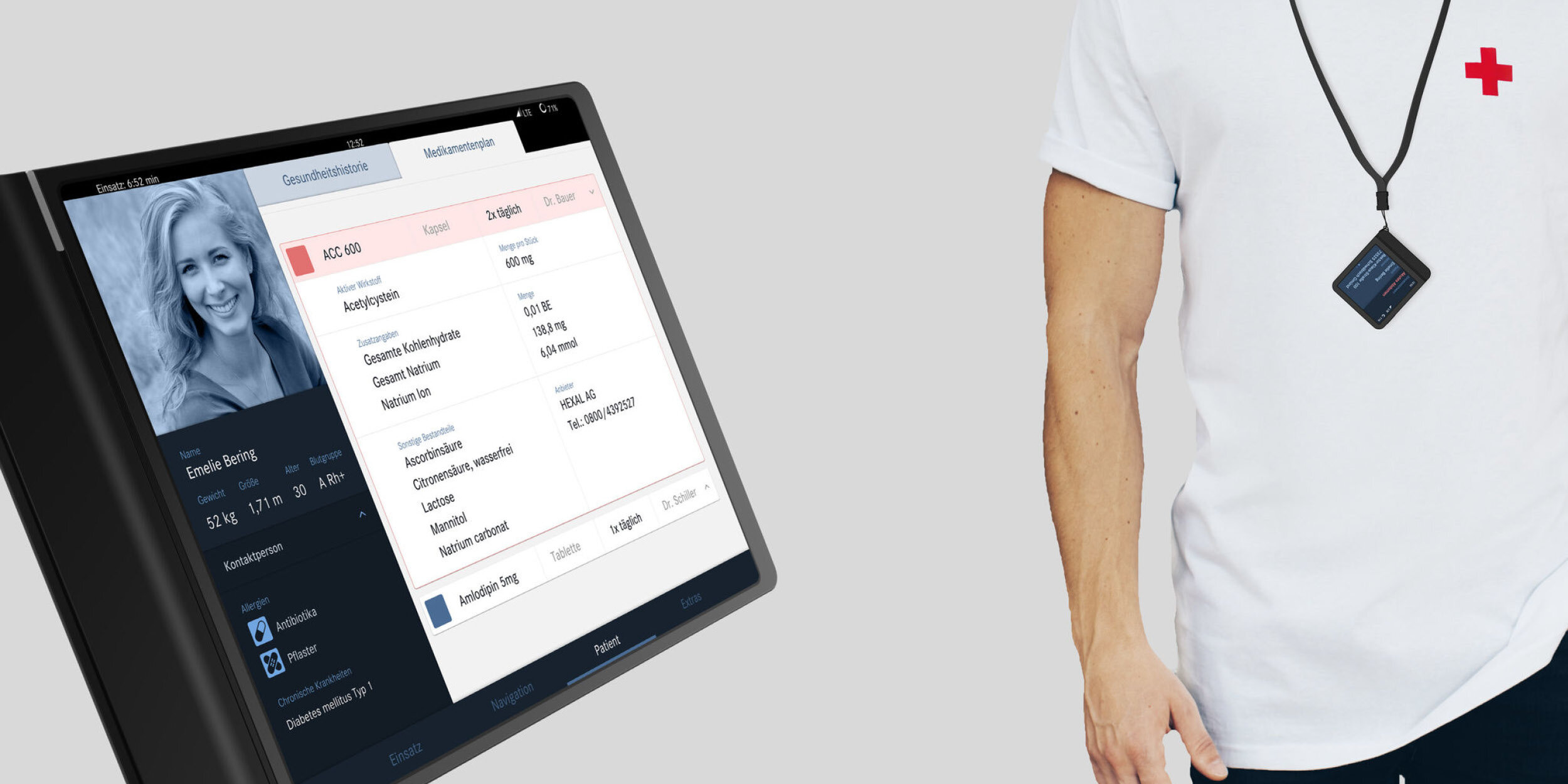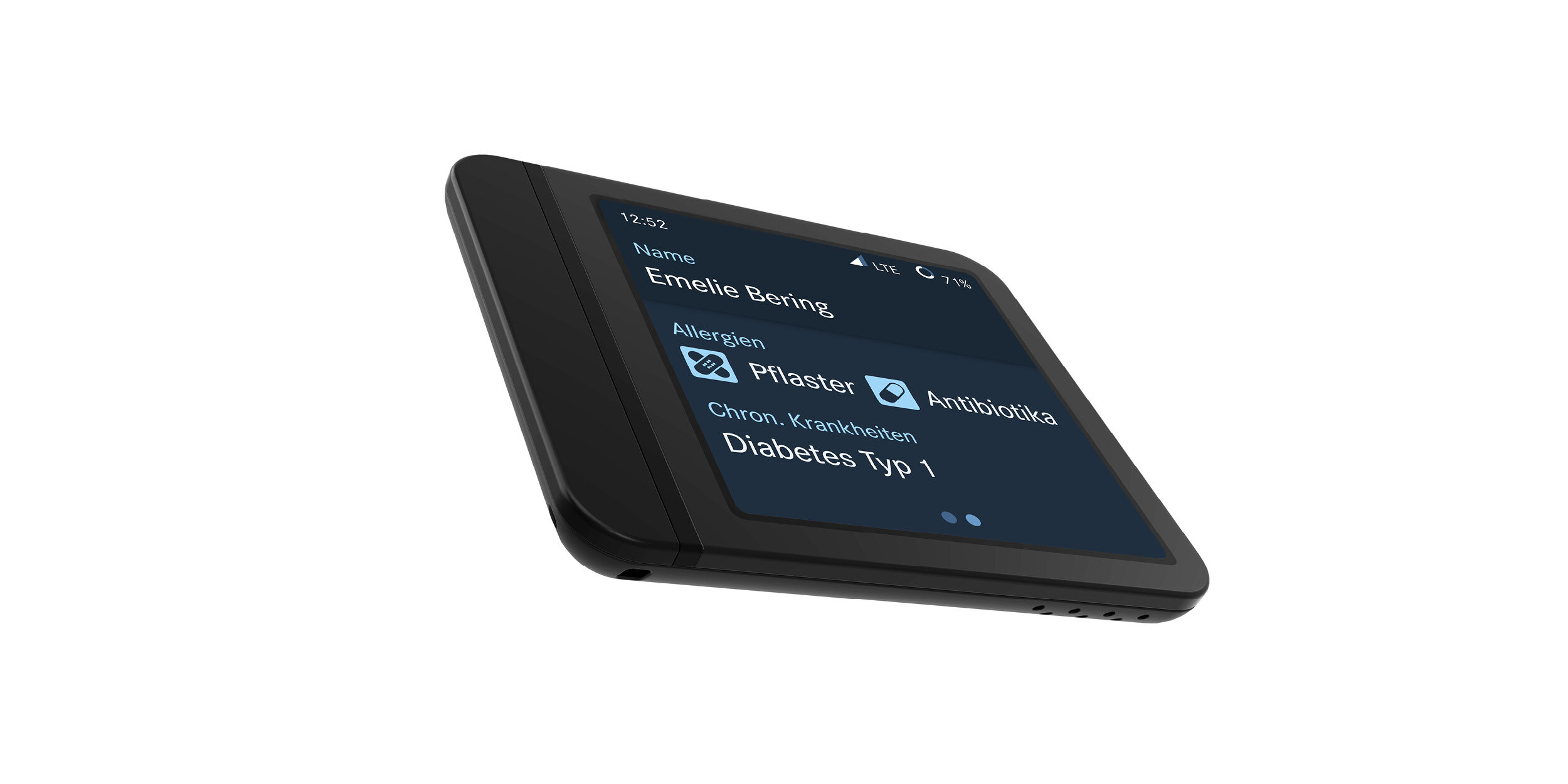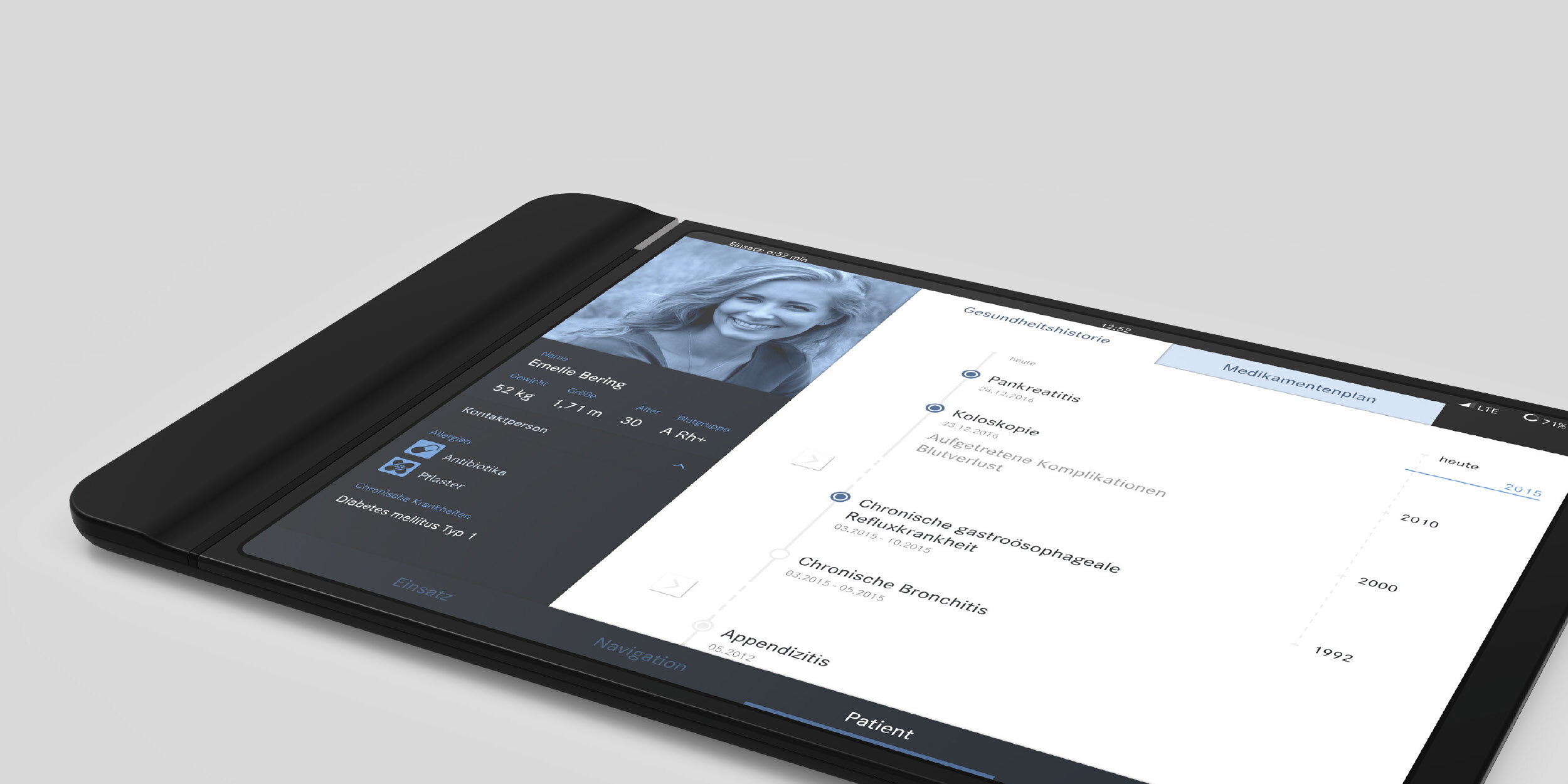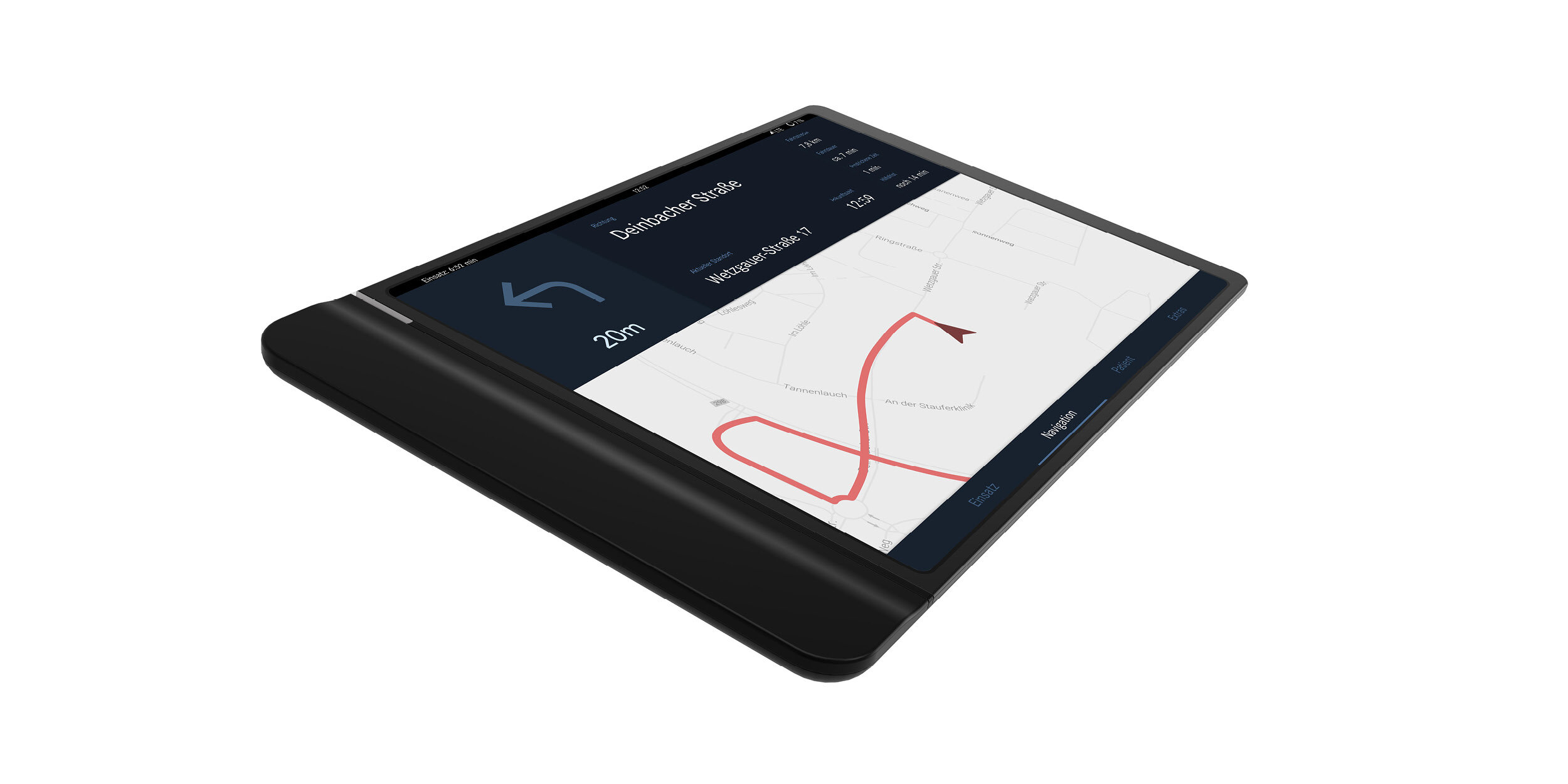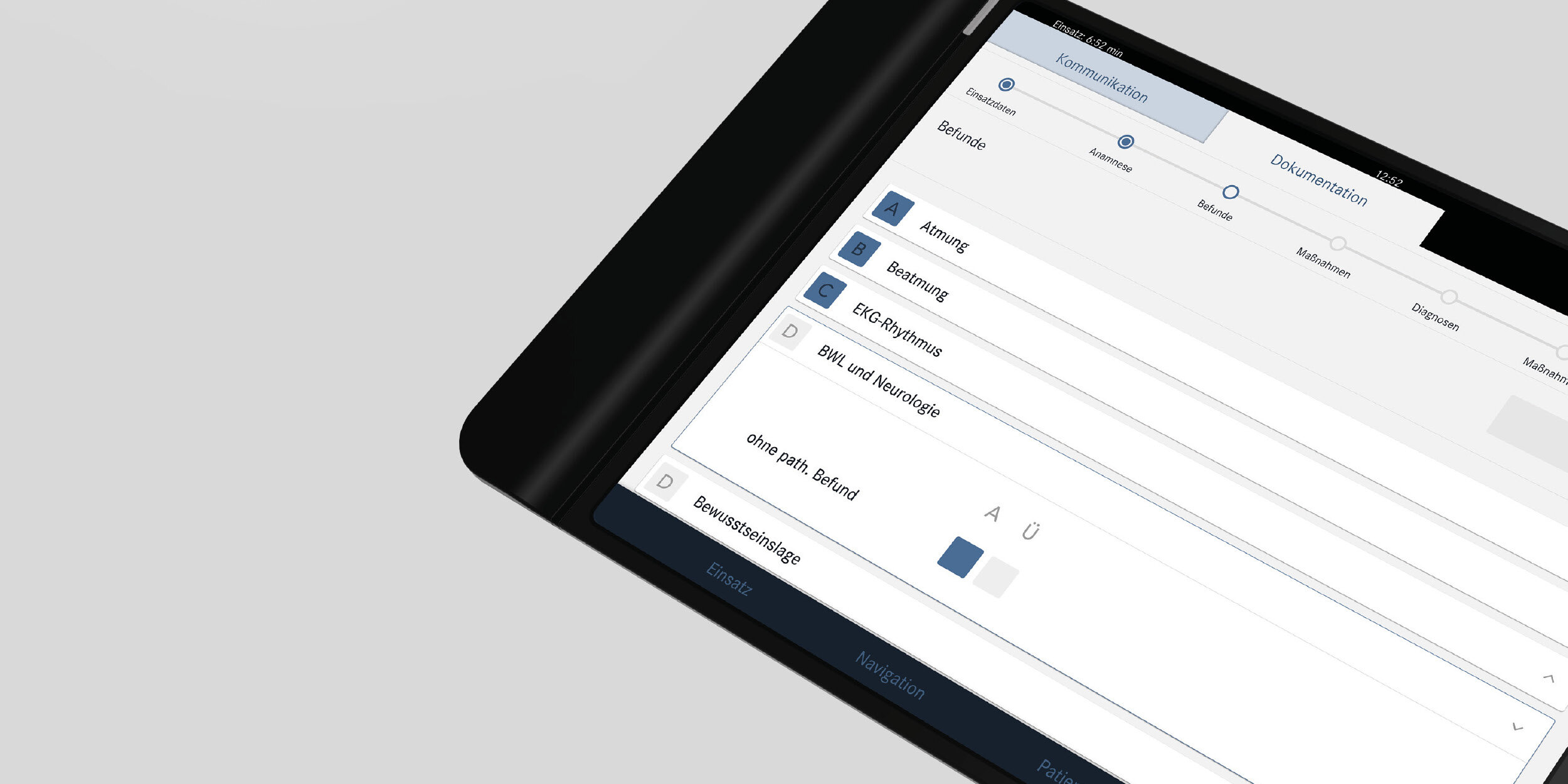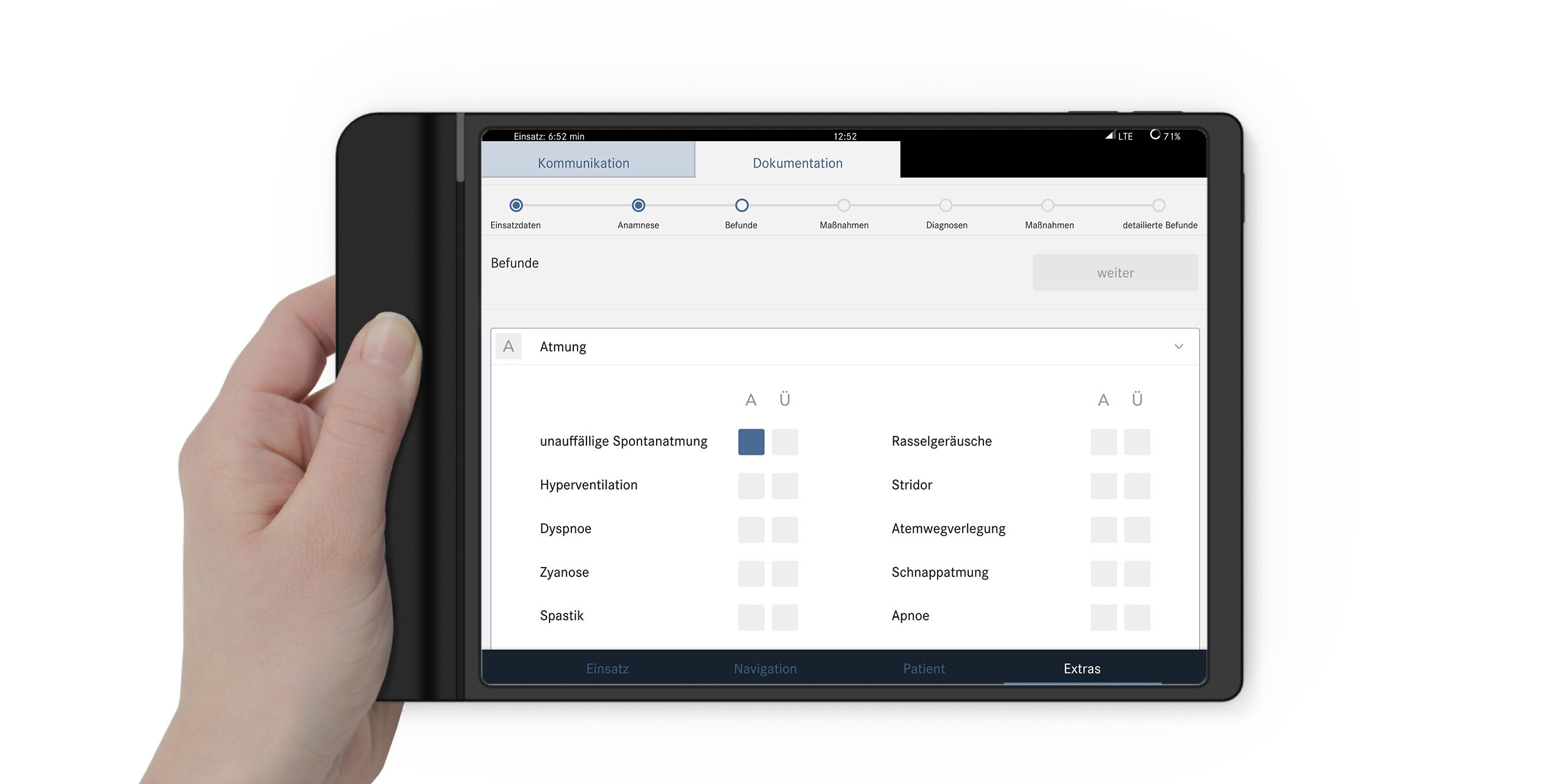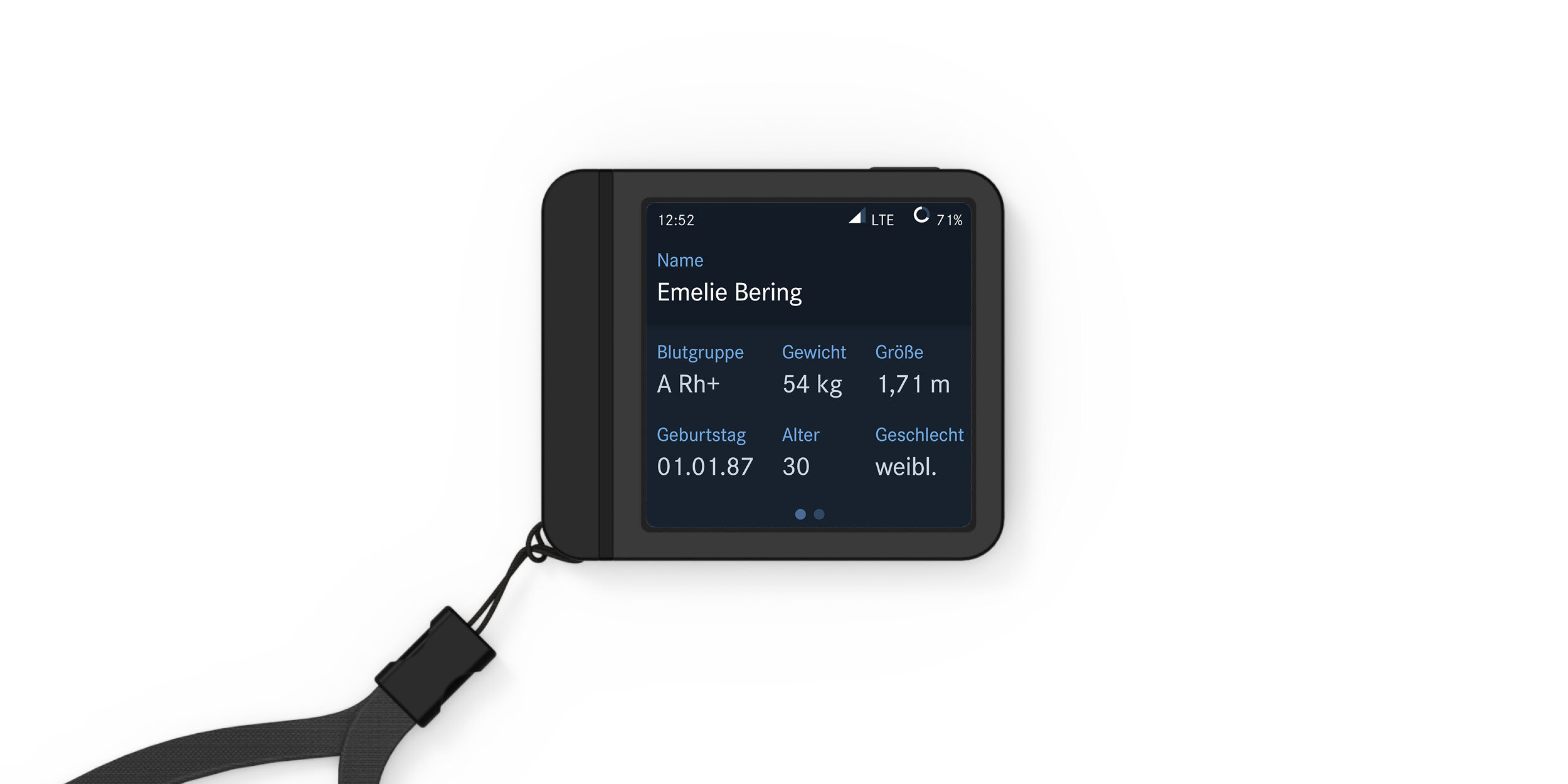lifechain
Connecting the rescue process
Master pre-project published 2017
The aim of this project is to improve the efficiency of the rescue process. This can be implemented by means of future patient data, which will be supplied by the patient‘s electronic health card. The basis is a cross-platform system which links all parties involved during the complete rescue operation and provides them with information as fast as possible. In addition to the design of the system, this project also includes the design of two devices for direct use on the patient and the system-wide application.
Megatrends such as connectivity, knowledge culture, individualization, silver society, security and mobility were taken into account throughout the entire project development. The project was strategically developed by an interdisciplinary team of 3 people using design thinking methods.
It started with an intensive research and analysis phase using interviews. Afterwards brainstorming sessions were hold to identify key issues. Opportunity areas, benchmarking and individual user journey maps, as well as stakeholders and empathy maps helped to identify the project ascertainment. In the end, a user test helped to incorporate possible suggestions for improvement and iterations.
„ In case of an emergency, every second counts.“
The demo film shows the
– user scenario
The service application on the two devices
– tablet and beeper
Coordination effort
– in the rescue process
lifechain offers an integrated system solution for the entire rescue operation. The networked system connects all process links and, thus, it increases the targeted exchange of information. By accessing on already existing data, the amount of work can be reduced and important time can be saved.
Master Program: Strategic Design at University of Applied Sciences
Project Partners: Selina Mieslinger, Julian Ebert, Felix Gärtner

